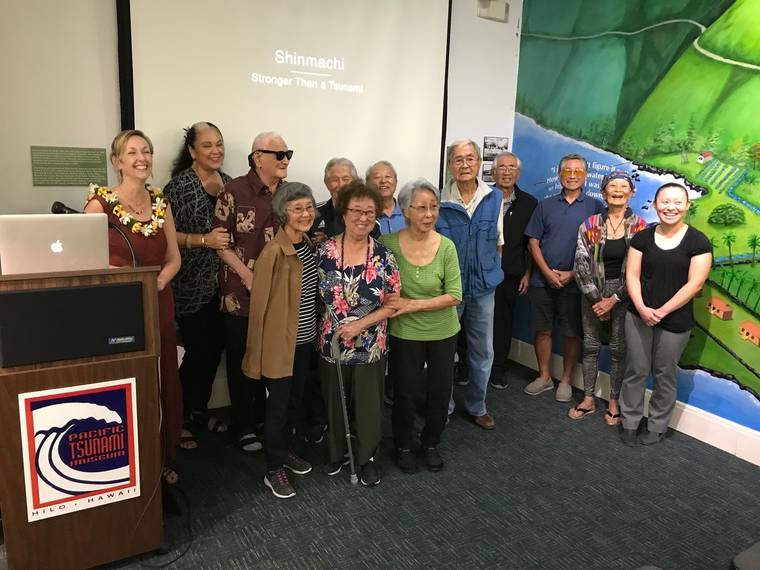On March 11, the Pacific Tsunami Museum hosted a special screening of the new documentary, “Shinmachi: Stronger Than a Tsunami,” for the 14 Hilo residents and their families who tell their stories about growing up in the Japanese family-business district that was leveled by the April 1, 1946, tsunami.
The memories of that day are vivid.
In the film and in conversation, Kenneth Kameoka recreates the intonation and gestures of what he thought were April Fools’ Day pranksters yelling, “tiger wave!” One can almost see Yoshinobu Terada instinctively grabbing his brother’s surfboard as the floor of his house near Hilo Iron Works began to sink.
These events, though formative, account for just one day of the community’s 33-year history.
Grants from Creighton University’s George and Susan Haddix Research Incubator Fund and the Henry W. Casper S.J. Professorship funded a community-based collaboration with historian Heather Fryer to collect oral history interviews and crowdsource photographs from private collections.
Kameoka brought people together to tell their stories, which are connected through narration by Akiko Masuda. Lynn Beittel of Visionary Video composed the visual and audio elements that bring Shinmachi to life.
The story that emerges is not about the tsunami, it is about preparedness.
Shinmachi was founded as a kumiai in 1913 by first-generation Japanese plantation workers such as skilled carpenter Kametaro Fujimoto, who started Hawaii Planing Mill; Tatsunosuke Ikeda, who refused to shop at the plantation store and founded Ikeda Shoyu; Hilo Macaroni Co.; and other Shinmachi businesses.
Isojiro Kitagawa started a lending agency for Japanese borrowers after founding I. Kitagawa Motors. Atebara Potato Chips, S. Tokunaga Store and other still-familiar businesses met consumer demand, brought them economic independence and provided options to hard labor for their children.
Although Shinmachi thrived in the long term, it was a place of daily shared struggle against racial discrimination, economic depression and the extraordinary hardships of World War II.
Neighbors’ collective commitment to hard work, sharing burdens and bounty alike, preserving trust and making the most out of every resource available paid off.
Ramon Goya recalled that if one Shinmachi bakery ran out of flour, another would share its supply. When the kids were playing in the neighborhood, every adult was watching every child — leaving no room for misbehavior, and unmet needs. Places of worship such as Hilo Meishoin and Hilo Daijingu and Shinmachi’s Tenrikyo Mission held the community together.
“All the churches were safe havens” recalled Donald Ikeda.
When the tsunami came, resilience, resourcefulness and responsiveness to others was Shinmachi’s natural state of being.
Restarting was difficult and recovery painful, yet Shinmachi’s legacy continues.
In a moment last week when a tsunami watch took place amidst the global COVID-19 pandemic, Shinmachi’s stories have a reassuring resonance. Their collective spirit that they brought to the theater in the Pacific Tsunami Museum is the living embodiment of the phrase, “We’re in this together.”






